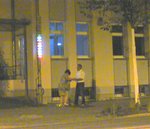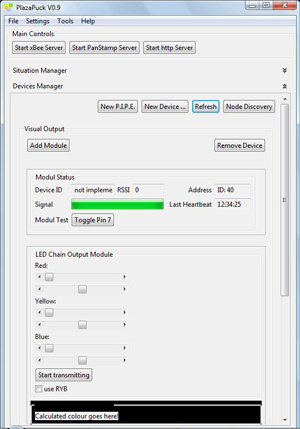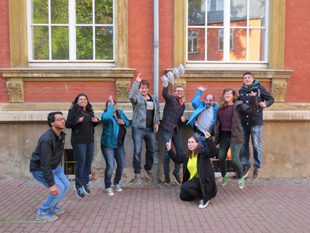Creating digital urban interventions require wireless solutions to be flexible during evaluation. To enable various spatial configurations of the setup students refactored an existing orchestration software called rokkaspot. This sever software can orchestrate multiple sensor and actuator nodes which make up the installation.







The existing software implemented an xBee server. As the xBee frequency band has lost quality in terms of data transfer reliability over the the years (2.4GHz overlaps with wifi standard) the network hardware was changed to panStamp (sub-gigaherz, CC1101) and a server has been implemented.
The idea of devices and modules stayed the same. Hardware wise modules consist of a microcontroller (atmega 328 @ 3V3), transciever (CC1101), sensor or actuator, recharchable battery (S3, 2200Ah) and power management (12V, 5V, 3V3). A device can be composed out of modules and make up the interface. In this project the LED structure was considered as the display device and the input device consisted of three of the same modules; tube pressure pads.
During field tests the redundancy of modules within a device had a positive effect. As it is normal that prototypes break when used by a lot of people in public space, damaging one did not stop the full installation and evaluation could continue.
The installation can also easily be extended with multiple LED displays also introducing redundancy in the display system.

Weiterführende Links:
Wiki
SVN Rokkaspot Orchestration Server
Projektteilnehmer:
René Levin (M.Sc. CSM)
Georg Erfurt (B.Sc. MI)
Betreut durch:
Prof. Dr. Eva Hornecker
Dr. Patrick Tobias Fischer
